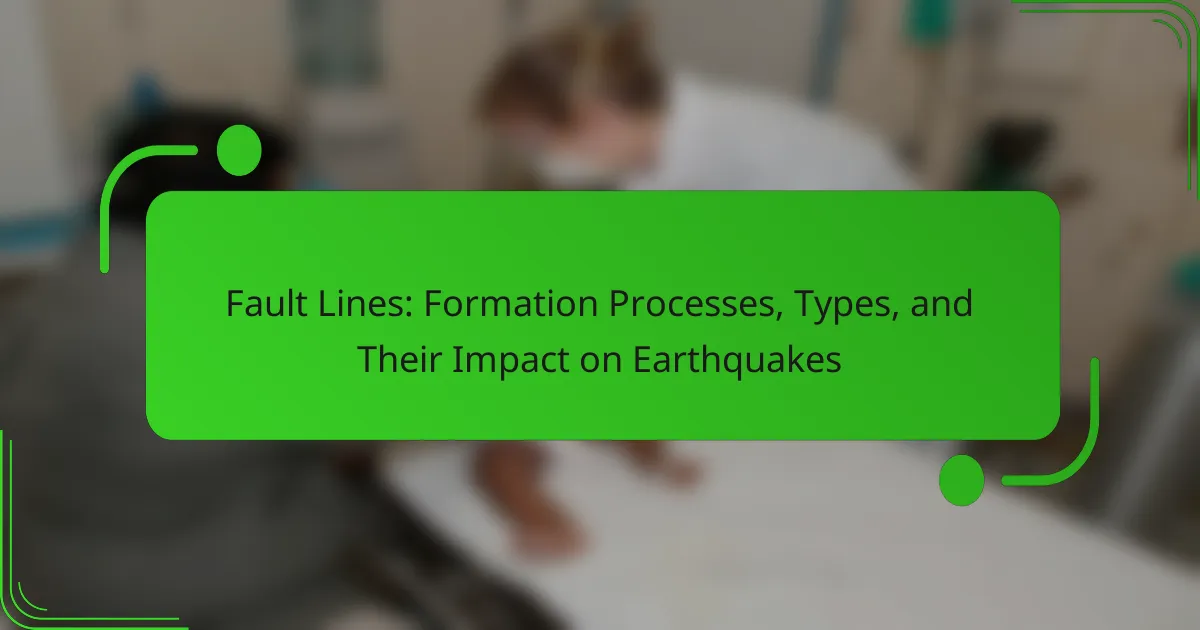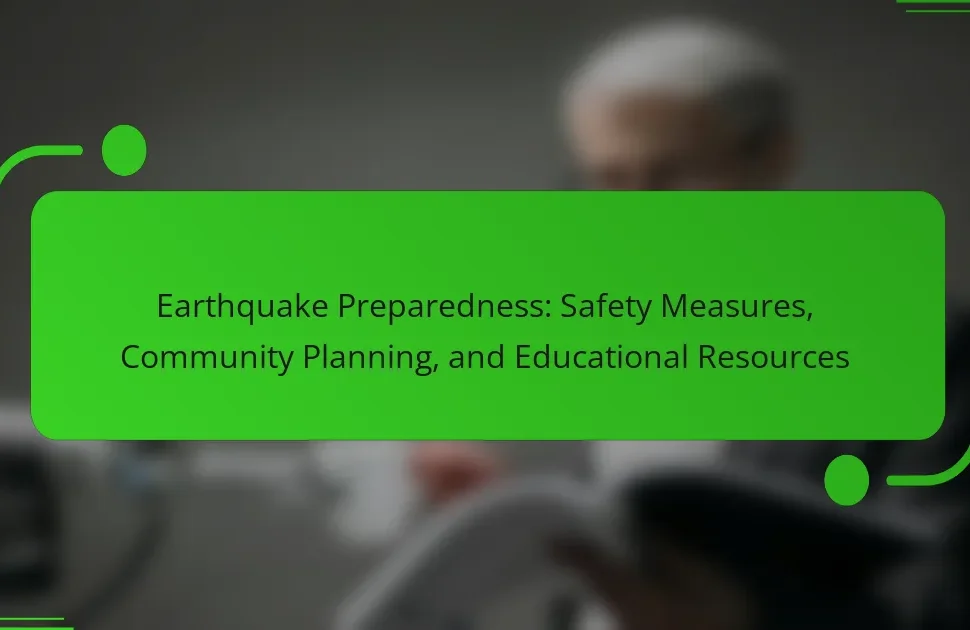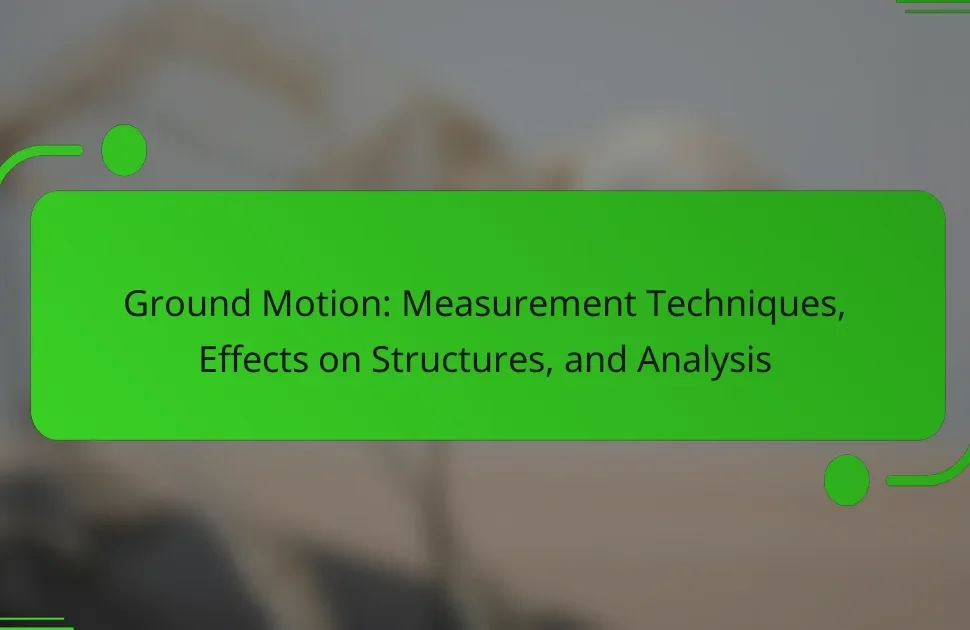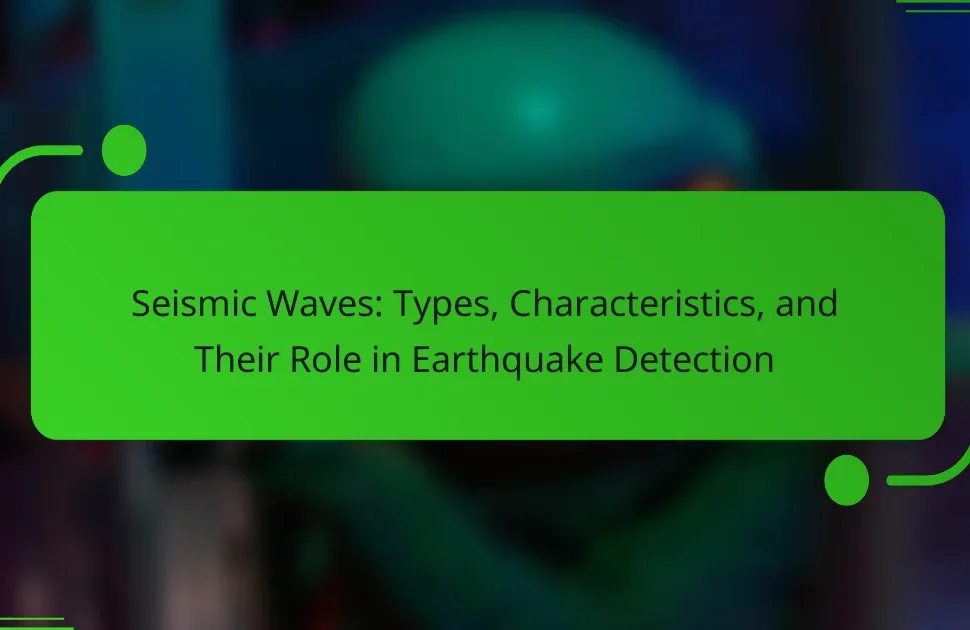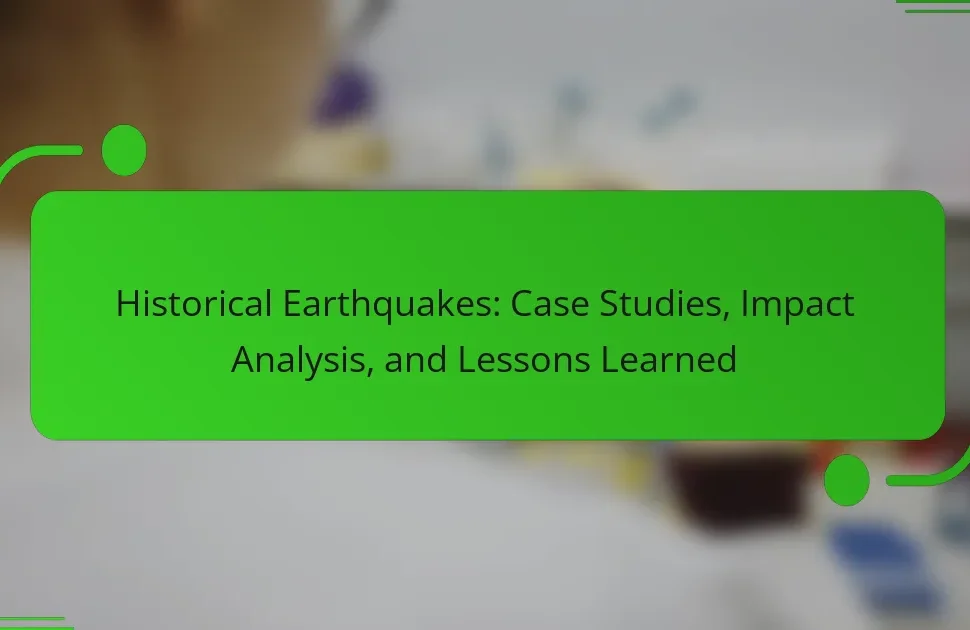Fault lines are fractures in the Earth’s crust where tectonic plates converge, serving as the primary sites for earthquakes. This article explores the formation processes and types of fault lines, emphasizing their significance in seismic activity. Key characteristics of fault lines, such as the San Andreas Fault, are discussed in relation to their potential for generating significant earthquakes. Understanding these geological features is essential for assessing earthquake risks, which plays a critical role in urban planning and disaster preparedness. The article provides a comprehensive overview of how fault lines impact seismic events and the importance of this knowledge for safety and infrastructure development.
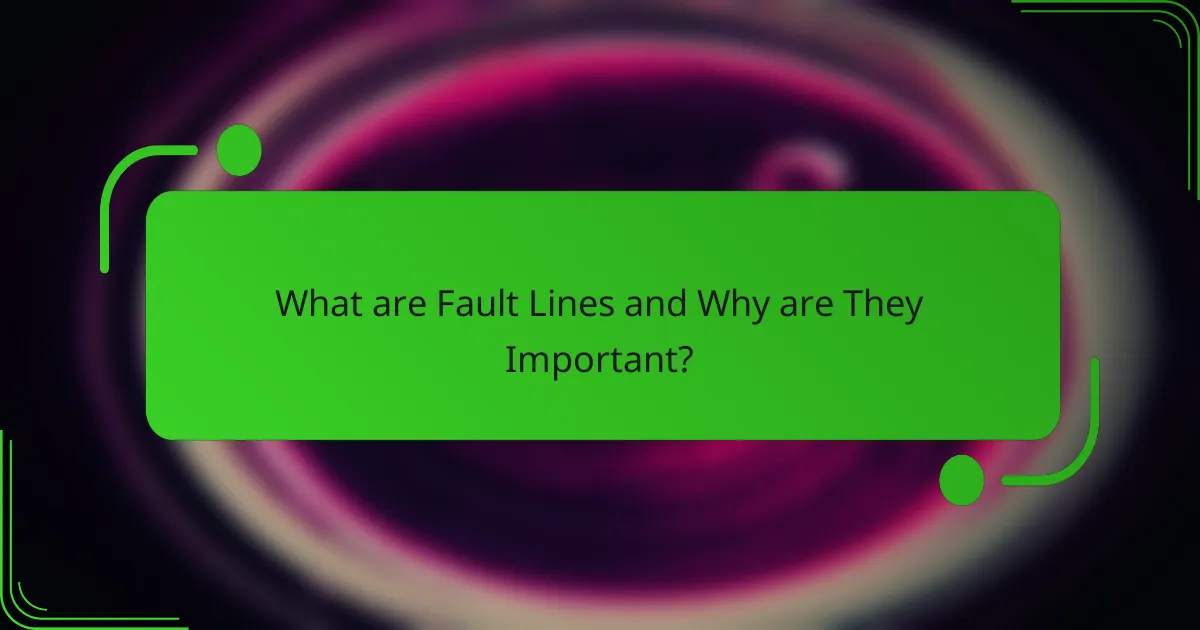
What are Fault Lines and Why are They Important?
Fault lines are fractures in the Earth’s crust where tectonic plates meet. They are important because they are the primary sites of earthquakes. When stress builds up along these lines, it can lead to sudden releases of energy. This release causes seismic waves, resulting in ground shaking. The severity of earthquakes can vary significantly based on fault line characteristics. For instance, the San Andreas Fault is notable for its potential to generate large earthquakes. Understanding fault lines helps in assessing earthquake risks. This knowledge is crucial for urban planning and disaster preparedness.
How do Fault Lines Form?
Fault lines form due to the movement of tectonic plates. These plates can either collide, pull apart, or slide past each other. Stress builds up in the Earth’s crust as these plates interact. When the stress exceeds the strength of the rocks, a sudden release occurs. This release creates a fracture in the crust, known as a fault line. The movement along these faults can result in earthquakes. For example, the San Andreas Fault in California is a well-known transform fault. It marks the boundary between the Pacific and North American plates.
What geological processes contribute to the formation of Fault Lines?
Fault lines form primarily due to tectonic processes. These processes include the movement of the Earth’s tectonic plates. Stress accumulates in the Earth’s crust as these plates interact. When the stress exceeds the strength of rocks, they fracture. This fracture creates a fault line. There are different types of faults, such as normal, reverse, and strike-slip faults. Each type results from specific stress conditions. For example, normal faults occur due to extensional stress, while reverse faults form under compressional stress. Strike-slip faults arise from horizontal shear stress. These geological processes are critical in shaping the Earth’s landscape and can lead to significant seismic activity.
How does tectonic activity influence the development of Fault Lines?
Tectonic activity is the primary driver of fault line development. It occurs due to the movement of Earth’s tectonic plates. These plates can collide, pull apart, or slide against each other. Such movements create stress within the Earth’s crust. When the stress exceeds the strength of rocks, fractures occur, forming fault lines. The San Andreas Fault is a well-known example of this process. It results from the Pacific and North American plates sliding past each other. Over time, repeated tectonic activity can widen and deepen these faults. This process can lead to significant geological features and increased earthquake risk.
What Types of Fault Lines Exist?
There are three main types of fault lines: normal faults, reverse faults, and strike-slip faults. Normal faults occur when the crust is extended, causing one block of rock to move downward relative to another. Reverse faults happen when the crust is compressed, leading to one block moving upward over another. Strike-slip faults involve horizontal movement, where two blocks slide past each other. Each type of fault line is associated with different tectonic plate movements and can lead to varying seismic activities. For example, normal faults are common in divergent boundaries, while reverse faults are found in convergent boundaries. Strike-slip faults are typically located along transform boundaries.
What are the characteristics of Normal Faults?
Normal faults are characterized by the downward movement of the hanging wall relative to the footwall. This occurs due to extensional forces acting on the Earth’s crust. Normal faults typically have a steep dip, often greater than 30 degrees. They are common in regions experiencing tectonic stretching, such as rift zones. The displacement along normal faults can range from a few centimeters to several kilometers. Normal faults can create features like grabens and horsts in the landscape. They are associated with earthquakes, which occur when accumulated stress is released. Historical examples include the Basin and Range Province in the United States.
How do Reverse Faults differ from Normal Faults?
Reverse faults occur when the hanging wall moves up relative to the footwall. This movement is primarily caused by compressional forces. In contrast, normal faults happen when the hanging wall moves down relative to the footwall. Normal faults are typically formed due to extensional forces. The angle of reverse faults is generally steeper than that of normal faults. Reverse faults can lead to the formation of mountain ranges, while normal faults are often associated with rift valleys. Both fault types are critical in understanding seismic activity and earthquake mechanics.
What defines Strike-Slip Faults and their movement?
Strike-slip faults are characterized by horizontal movement of tectonic plates. The primary motion occurs parallel to the fault line. This movement results from shear stress in the Earth’s crust. Strike-slip faults can be classified into two types: left-lateral and right-lateral. In left-lateral faults, the opposite side moves to the left when viewed from one side. In right-lateral faults, the opposite side moves to the right. These faults can be found at transform plate boundaries. The San Andreas Fault in California is a prominent example of a strike-slip fault. This type of faulting can lead to significant earthquakes, impacting nearby regions.
How do Fault Lines Impact Earthquakes?
Fault lines impact earthquakes by serving as zones where tectonic plates interact. These interactions can lead to stress accumulation along the fault line. When the stress exceeds the strength of the rocks, it results in a sudden release of energy. This release generates seismic waves, causing an earthquake. Historical data shows that major earthquakes often occur along well-defined fault lines. For example, the San Andreas Fault has produced significant seismic events. The relationship between fault lines and earthquakes is well-documented in geological studies. Understanding this impact is crucial for earthquake preparedness and risk assessment.
What is the relationship between Fault Lines and earthquake occurrence?
Fault lines are fractures in the Earth’s crust where tectonic plates meet. The movement along these fault lines can lead to the release of energy, causing earthquakes. Most earthquakes occur along these boundaries due to the stress accumulation from plate interactions. For instance, the San Andreas Fault in California is a well-known example where significant seismic activity is recorded. Studies show that approximately 90% of the world’s earthquakes occur near fault lines. This correlation highlights the critical role fault lines play in earthquake occurrence.
How do different types of Fault Lines affect earthquake magnitude?
Different types of fault lines affect earthquake magnitude through their specific movements and characteristics. Normal faults result from extensional forces, leading to smaller magnitude earthquakes. Reverse faults, caused by compressional forces, can produce larger magnitude earthquakes due to the buildup of stress. Strike-slip faults involve horizontal movement, often resulting in moderate to large magnitude earthquakes. The depth of the fault also influences the magnitude; deeper faults can produce more powerful earthquakes. Historical data indicates that the San Andreas Fault, a strike-slip fault, has produced significant earthquakes with magnitudes exceeding 7.0. Thus, the type of fault line directly correlates with the potential magnitude of an earthquake.
What are the Consequences of Earthquakes Triggered by Fault Lines?
Earthquakes triggered by fault lines can lead to significant destruction and loss of life. They can cause buildings to collapse, resulting in casualties and injuries. Infrastructure such as roads, bridges, and utilities may be severely damaged. This disruption can hinder emergency response efforts. Ground shaking can also lead to landslides and tsunamis, further increasing the risk to nearby communities. The economic impact can be substantial, with costs for recovery and rebuilding often reaching billions of dollars. Historical examples include the 1994 Northridge earthquake, which caused over $44 billion in damages. Such consequences highlight the critical need for preparedness and resilient infrastructure in earthquake-prone areas.
How do earthquakes impact infrastructure and communities?
Earthquakes significantly damage infrastructure and disrupt communities. They can cause buildings to collapse, leading to loss of life and injuries. Roads and bridges may become impassable, hindering emergency response efforts. Utilities such as water, electricity, and gas often experience outages, affecting daily life. Economic impacts include repair costs and loss of business revenue. Historical examples include the 1994 Northridge earthquake, which caused over $44 billion in damages. Communities may face long-term displacement and psychological effects from the trauma. Recovery often takes years, affecting social cohesion and local economies.
What measures can be taken to mitigate earthquake damage?
Implementing building codes can significantly mitigate earthquake damage. Strict adherence to seismic design standards ensures structures can withstand tremors. Retrofitting older buildings enhances their resilience to seismic activity. Installing base isolators allows buildings to move independently of ground motion. Creating emergency response plans prepares communities for post-earthquake scenarios. Conducting regular earthquake drills increases public awareness and readiness. Investing in early warning systems provides critical seconds to take protective actions. According to the Federal Emergency Management Agency (FEMA), these measures can reduce damage by up to 50%.
How can Understanding Fault Lines Enhance Earthquake Preparedness?
Understanding fault lines enhances earthquake preparedness by providing critical information about seismic risk. Knowledge of fault lines helps identify areas prone to earthquakes. This understanding allows for better urban planning and building codes. Communities can implement early warning systems based on fault line activity. Historical data on fault lines aids in predicting potential earthquake magnitudes. For instance, the San Andreas Fault has a history of significant earthquakes, informing preparedness strategies. Awareness of fault lines also encourages public education on emergency response. By understanding fault lines, individuals can create effective disaster plans tailored to their specific region.
What resources are available for learning about local Fault Lines?
Resources for learning about local fault lines include academic journals, government geological surveys, and educational websites. The United States Geological Survey (USGS) provides extensive information on fault lines and seismic activity. The Geological Society of America publishes research articles on fault formation and behavior. Local universities often have geology departments that offer courses and resources. Online platforms like Coursera and edX provide courses related to geology and earthquakes. Additionally, community workshops and local government programs may host informational sessions on regional fault lines.
How can individuals and communities prepare for potential earthquakes?
Individuals and communities can prepare for potential earthquakes by creating emergency plans and kits. An emergency plan should include communication strategies and meeting points. Families should discuss what to do during an earthquake. They should identify safe spots in their homes, such as under sturdy furniture. Communities can conduct earthquake drills to practice these plans. Emergency kits should contain food, water, first aid supplies, and flashlights. The Federal Emergency Management Agency (FEMA) recommends having at least 72 hours of supplies. Local governments often provide resources and training for earthquake preparedness. Statistics show that preparedness can significantly reduce injuries and fatalities during earthquakes.
Fault lines are fractures in the Earth’s crust where tectonic plates interact, leading to significant seismic activity, including earthquakes. This article explores the formation processes of fault lines, their various types—normal, reverse, and strike-slip—and their impact on earthquake magnitude and occurrence. It highlights the critical relationship between fault lines and seismic risks, emphasizing the importance of understanding these geological features for effective urban planning and disaster preparedness. Additionally, it discusses the consequences of earthquakes triggered by fault lines and outlines measures for mitigating damage and enhancing community preparedness.
